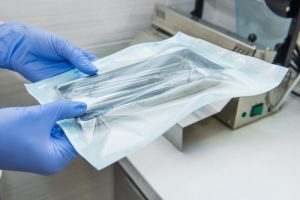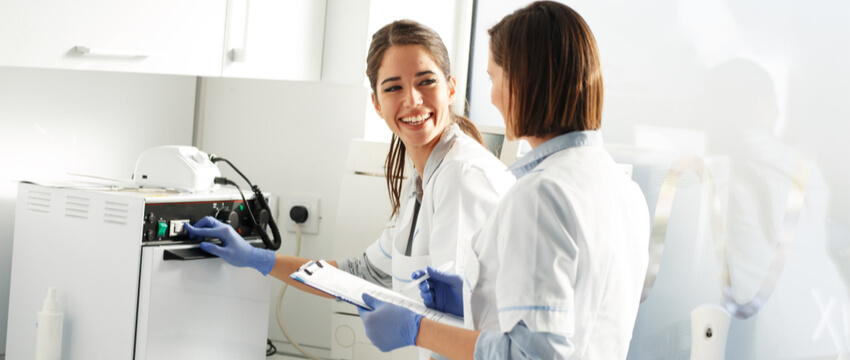When we think of the instruments the dentists used to perform our dental procedures, have you ever wondered how they sterilise those things so other people can use them as well? And have you ever wondered if the instruments they used on us are even clean and clear from any contamination that can spread infection and whatnot? These thoughts are what makes autoclaves important. Let us learn more about the significance of autoclave sterilization temperature and time when it comes to not just the dental setting, but all fields of health and safety that require sanitation.
Autoclave sterilization process
To know the importance of having an autoclave in your dental practice, it is essential for us to know its use. How do autoclave sterilisers help dentists in maintaining the sanitation and cleanliness of their instruments? An autoclave is a piece of sanitation equipment that removes or kills microorganisms like bacteria, viruses, fungi, and others using high pressure and temperature. Using steam sterilisation, the autoclave, as a huge enclosed chamber, is where dentists place their washed and cleaned dental instruments so that using sealed pressure and steam in high temperatures, microorganisms that can spread diseases and other unsanitary conditions from one patient to another will be killed.
How are autoclave sterilization temperature and time related?
It is a basic fact that the higher the temperature is inside an enclosed chamber, the higher the pressure gets. Think of a pressure cooker as you tenderise the beef. The pressure inside the cooker penetrates the meat with the help of the heat, and the steam they produce becomes higher and hotter, allowing the meat to cook through evenly. The same happens with an autoclave steriliser, like MELAG Autoclave. As the temperature and pressure rise, the microorganisms start to be removed, and as it takes time to finish the process, the sterilisation process becomes dependent on the amount of pressure and time it would take to produce the right amount and temperature of the steam that eradicates the infection-causing germs.
Reminders in using a dental autoclave
An autoclave is not your average steriliser. There are some reminders that top autoclave manufacturers, like MELAG Autoclave, would want to tell their users in order to optimise the use and efficiency of the product.
Know which materials are compatible with a dental autoclave.
 It is already a given that steel dental instruments are acceptable to be sterilised through an autoclave. Glassware and other important supplies like cotton, gloves, paper, etc. should be initially determined if compatible with autoclaving so that no hazards or dangers will be present during the procedure. As of the moment, Pyrex® is the only approved glass product that can be safely sterilised. The others should be placed in an autoclavable bag that can withstand the pressure and heat inside the machine.
It is already a given that steel dental instruments are acceptable to be sterilised through an autoclave. Glassware and other important supplies like cotton, gloves, paper, etc. should be initially determined if compatible with autoclaving so that no hazards or dangers will be present during the procedure. As of the moment, Pyrex® is the only approved glass product that can be safely sterilised. The others should be placed in an autoclavable bag that can withstand the pressure and heat inside the machine.
Wear PPE
Wearing personal protective equipment (PPE) should always be considered when using a dental autoclave. Although top autoclave brands, like MELAG Autoclave, advertise that they are safe to operate, using proper PPE like gloves, laboratory coat, lab goggles, and more may not be too inconvenient to use and practice. As they say, prevention is always better than cure.
Ensure proper packaging and loading
 Only those who know how to operate and use a dental autoclave should regulate the autoclave sterilization temperature and time. Only clean and compatible instruments should be sterilised and autoclaved. Never put liquid in a sealed container because the pressure and temperature inside the autoclave chamber may affect its integrity and may damage the dental autoclave itself. Do not overload the autoclave or allow the packages or instruments to touch the walls of the chamber to avoid melting them.
Only those who know how to operate and use a dental autoclave should regulate the autoclave sterilization temperature and time. Only clean and compatible instruments should be sterilised and autoclaved. Never put liquid in a sealed container because the pressure and temperature inside the autoclave chamber may affect its integrity and may damage the dental autoclave itself. Do not overload the autoclave or allow the packages or instruments to touch the walls of the chamber to avoid melting them.
Validate autoclave use
Use materials that validate the sterilisation of the instruments after being autoclaved so you would know if the instruments you are about to use are sterilised properly. Tape indicators and chemical indicator strips attached to the autoclave packaging bags can indicate if the sterilisation of the instruments inside it is done.


